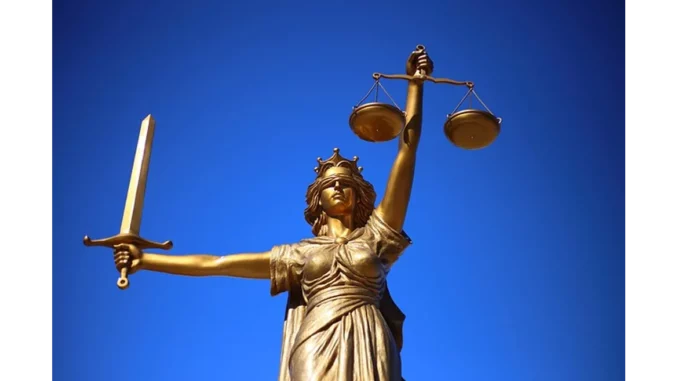
The recent court decision to approve a 180-day extension in a high-profile cryptocurrency forfeiture case has garnered significant attention, underscoring the complexities involved in cryptocurrency-related legal proceedings and highlighting the evolving landscape of digital asset regulation. This development not only reflects the intricacies of tracing and securing digital assets but also points to the necessity for adaptable legal frameworks to address the unique challenges posed by these technologies.
Cryptocurrency, a digital or virtual currency utilizing cryptography for security, has gained popularity as a medium for transactions. However, its pseudonymous nature has made it an attractive tool for illicit activities such as money laundering, drug trafficking, and fraud. Consequently, regulatory scrutiny and legal actions have intensified. Forfeiture of cryptocurrency involves the seizure of digital assets connected to criminal activities, governed by a complex legal framework encompassing various statutes and regulations.
Minnesota Statutes provide a comprehensive legal framework for asset forfeiture, addressing cryptocurrencies among other assets. According to Section 609.531, forfeitures aim to enforce the law, deter crime, reduce the economic incentives for criminal enterprises, and increase the pecuniary loss resulting from criminal activities. The statutes outline the procedures for seizing property, the rights of property owners, and the judicial determination process for forfeiture, emphasizing a multifaceted approach to address the challenges posed by digital assets.
Key provisions of Minnesota’s forfeiture laws include the liberal construction and purpose of the statutes, which aim to support law enforcement, crime deterrence, and economic disincentives for criminal activities. Property subject to forfeiture can be seized with or without court process under specific conditions, such as during a lawful arrest or when there is probable cause to believe the property is connected to a felony. Upon the commission of the act leading to forfeiture, all rights to the property immediately vest with the appropriate agency, which must secure the property and prevent waste. Forfeiture is treated as a civil action independent of criminal prosecution, requiring judicial determination and, in most cases, a related criminal conviction. Interested parties can file petitions to remit or mitigate forfeiture if incurred without willful negligence or intention to violate the law, or if extenuating circumstances exist.
The court’s approval of a 180-day extension in the cryptocurrency forfeiture case grants law enforcement agencies additional time to complete their investigation and gather necessary evidence. This extension is crucial given the complexities involved in tracing and securing digital assets. Cryptocurrencies are often stored in digital wallets, requiring specific keys for access, and their decentralized nature allows for easy cross-border transfers, complicating the seizure process. The extension has several implications, including enhanced investigative capabilities, the establishment of legal and procedural precedents, and increased regulatory scrutiny.
The additional time provided by the extension allows law enforcement to employ advanced blockchain analysis tools, trace the flow of digital assets, and identify all parties involved in criminal activity. This thorough investigation is crucial for building a strong case and ensuring that all illicit assets are seized. Furthermore, the extension sets a legal precedent for future cryptocurrency-related cases, highlighting the need for flexibility in legal timelines to accommodate the unique challenges posed by digital assets. This precedent can guide future court decisions and inform legislative updates.
Regulatory implications are also significant, as the case underscores the increasing regulatory scrutiny on cryptocurrencies. Law enforcement agencies and regulators are likely to push for stricter regulations and more robust frameworks to handle digital assets. For instance, in the United States, the Department of Justice has established the Digital Asset Coordinator (DAC) Network and the Virtual Asset Exploitation Unit (VAXU) to enhance its capabilities in investigating and prosecuting digital asset-related crimes. Similarly, the United Kingdom has introduced new regulations requiring crypto-related firms to register and comply with anti-money laundering (AML) regulations.
The court’s decision to grant a 180-day extension in the cryptocurrency forfeiture case reflects the evolving legal landscape surrounding digital assets. As cryptocurrencies become more intertwined with both legitimate and illicit activities, the need for comprehensive legal frameworks and adaptable judicial processes becomes ever more critical. The Minnesota Statutes provide a robust foundation for asset forfeiture, but ongoing developments in digital asset technology will necessitate continuous updates and adaptations to the law. This case serves as a reminder of the complexities involved in cryptocurrency regulation and the importance of a flexible and thorough approach to legal proceedings. By examining the specific provisions of the Minnesota Statutes and the broader regulatory context, we can better understand the implications of the court’s decision and the evolving landscape of cryptocurrency forfeiture. As digital assets become increasingly prevalent, it is crucial for legal and regulatory frameworks to keep pace with technological advancements to ensure effective enforcement and protection against criminal activities.

Be the first to comment